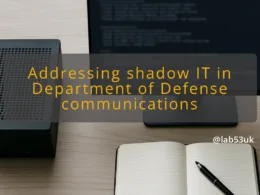Why Protect Active Directory Federation Services from Phishing Matters Now
Phishing attacks targeting Active Directory Federation Services (ADFS) have become increasingly sophisticated. Cybercriminals exploit ADFS to create fake login pages that mimic legitimate sites, tricking users into revealing their credentials. This is particularly concerning as organisations rely on ADFS for secure access to various applications.
A successful phishing attack can lead to significant data breaches, financial loss, and reputational damage.
The recent rise in phishing attacks has been attributed to the increasing complexity of these schemes, including the use of malvertising and legitimate redirects. Attackers combine trusted links with ADFS to bypass traditional security measures. As a result, it is critical for organisations to implement robust ADFS phishing protection strategies.
Understanding ADFS Phishing Techniques
ADFS phishing techniques often involve spoofing legitimate login pages. Attackers use social engineering to lure victims into entering their credentials on fake sites that appear authentic. This can include emails that look like they come from IT departments or other trusted sources.
One prevalent method is “ADFSjacking” where attackers redirect users from legitimate domains to phishing sites. These redirections often leverage trusted infrastructure, making them harder to detect. For instance, attackers may create convincing login pages that look identical to the official ADFS portal, effectively capturing user credentials and bypassing multi-factor authentication (MFA) measures.
The Role of Malvertising in ADFS Phishing Attacks
Malvertising plays a significant role in ADFS phishing attacks. Cybercriminals use malicious ads to direct users to phishing sites. These ads can appear on legitimate websites, making it difficult for users to identify the threat. Once users click on these ads, they are redirected to fake ADFS login pages designed to capture their credentials.
This method is particularly effective because it bypasses traditional security filters that focus on email phishing. As users become more aware of phishing emails, attackers adapt by using malvertising to reach their targets through alternative channels. Understanding this tactic is crucial for implementing effective ADFS phishing protection.
ADFS Best Practices for Enhanced Security
Implementing ADFS best practices is essential for bolstering security against phishing attacks.
Here are key practices to consider:
- Use complex passwords: Ensure that ADFS service accounts use long, complex passwords. Consider using Group Managed Service Accounts (gMSA) for better password management.
- Implement MFA: Always require multi-factor authentication for ADFS users. Opt for phishing-resistant methods, such as hardware security keys, rather than SMS-based verification.
- Regularly update software: Keep ADFS software and related components up to date with the latest security patches to mitigate vulnerabilities.
- Monitor logs: Regularly review ADFS logs for unusual login attempts. This can help detect and respond to potential phishing incidents early.
These best practices form a solid foundation for protecting ADFS from phishing threats.
SSO Hardening Checklist for System Administrators
System administrators should follow a checklist for hardening Single Sign-On (SSO) systems like ADFS:
- Conduct regular security assessments: Evaluate the security posture of ADFS and associated applications.
- Implement strict access controls: Limit access to ADFS based on user roles and responsibilities.
- Educate users: Provide training on recognising phishing attempts and safe browsing habits.
- Use anti-phishing solutions: Employ solutions that detect and block phishing attempts targeting ADFS.
This checklist ensures that system administrators take proactive steps to secure ADFS against phishing attacks.
How to Mitigate ADFS Relay Attacks
ADFS relay attacks can be devastating, allowing attackers to gain unauthorised access to user accounts.
Here are strategies to mitigate these attacks:
- Validate redirect URIs: Ensure that redirect URIs are always validated to prevent attackers from redirecting users to malicious sites.
- Implement conditional access policies: Use policies that enforce stricter access controls based on user location, device, and risk level.
- Monitor for unusual behaviour: Keep an eye on user activity and set alerts for any suspicious behaviour that could indicate a relay attack.
By taking these steps, organisations can significantly reduce the risk of ADFS relay attacks.
Implementation Checklist for ADFS Phishing Protection
An effective ADFS phishing protection strategy requires a comprehensive implementation checklist:
- Review and update security policies: Ensure that all security policies align with current threats and best practices.
- Deploy advanced threat detection tools: Use tools that can detect phishing attempts and provide alerts.
- Conduct phishing simulations: Regularly test employees with simulated phishing attacks to assess their awareness and response.
- Engage with security experts: Consult with cybersecurity professionals to identify vulnerabilities and implement best practices.
Completing this checklist can help organisations build a robust defence against ADFS phishing threats.
Phishing attacks targeting ADFS are a serious threat. By understanding the techniques used by attackers and implementing best practices, organisations can protect their systems and user credentials.
For further discussion, feel free to share your thoughts in the comments below.










